“(R217) Digraph sentences featuring sh, ck, th, wh and qu words (Volume 1)” has been added to your basket.
View basket
Showing 336–340 of 529 results
-
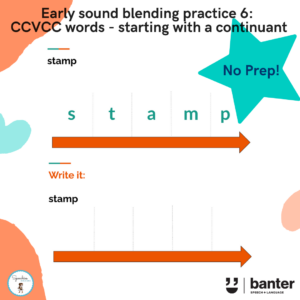
$5.99 including GST
Now that the student has learned to decode and encode simple CVC, CCVC and CVCC words composed on the basic code, we step up to working with consonant-consonant-vowel-consonant-consonant (CCVCC) word structures composed of high frequency letter-sound links.
Why blending? Learning to decode letters into speech sounds, and then to blend the speech sounds together to form words is a fundamental reading skill for all students in their first year of schooling.
Why read and write the words? Early encoding (writing) practice helps consolidate early decoding (reading) skills (and vice versa).
-
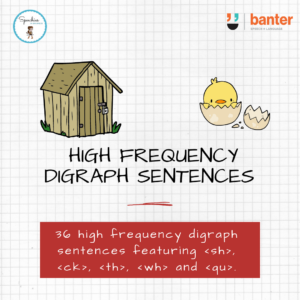
$4.99 including GST
Once students have learned:
it’s time to work on high frequency split digraphs like <sh>, <ck>, <th>, <wh> and <qu>.
This resource contains 36 silly sentences loaded with <sh>, <ck>, <th>, <wh> and <qu> digraphs.
-
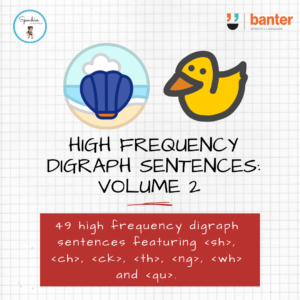
$4.99 including GST
Once students have learned:
it’s time to work on high frequency split digraphs like <sh>, <ck>, <th>, <wh>, <ch>, <ng> and <qu>.
This resource contains 49 silly sentences loaded with <sh>, <ck>, <th>, <wh>, <ch>, <ng> and <qu> digraphs.
-
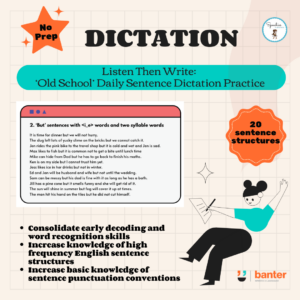
$15.00 including GST
In this 25-page no-prep resource, we target three things at once:
-
- encoding (or spelling) targets that mirror decoding practice (e.g with decodable books);
- high frequency sentence structures used in English; and
- English sentence punctuation conventions.
Our encoding and sentence structure targets are sequenced from simple to complex:
-
- In Part A, we target simple sentence structures (like SV, SVO, SVC, SVA, and SVOA) requiring only knowledge of the basic code.
- In Part B, we target compound sentence structures (using decodable conjoining conjunctions like “and”, “but”, “yet”, and “so”) requiring knowledge of split digraphs, how to encode two-syllable (decodable) polysyllabic words.
- In Part C, we target complex sentence structures (using subordinating conjunctions, like “because”, “if”, “while”, “before”, “after”, “until”, “unless” “although”, and “otherwise”) and knowledge of high frequency extended code diphthongs and digraphs following the early Sounds Write sequence.
-
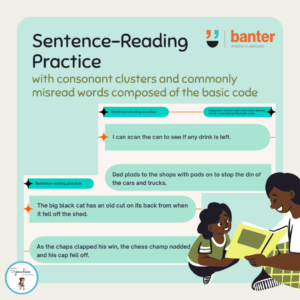
$6.99 including GST
In this resource, we provide students with lots of opportunities to read CCVC and CVCC words in sentences.
The sentences are not illustrated, are (deliberately) ‘odd’, and contain commonly misread words to discourage guessing; and encourage left-to-right decoding of each word in its entirety.
This 25-page resource is suitable for face-to-face sessions and distance learning.





